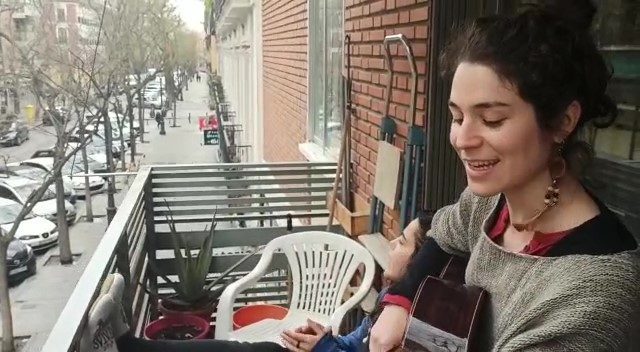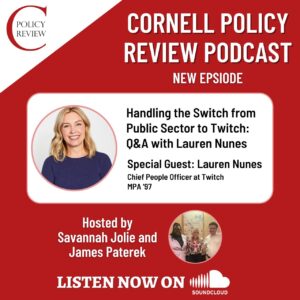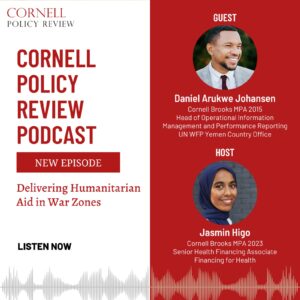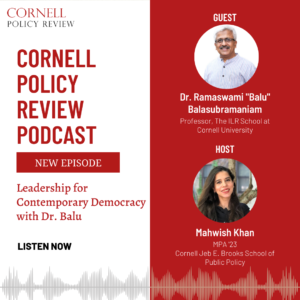
Rocío sings to her community from her balcony in Madrid, Spain.
Source: Rocío Nieto
By: Victor Benito
Edited by: Mila Cantar and Chukwuma Iwenofu
In late December 2019, a novel Coronavirus (COVID-19) began to spread around the world. On March 11, 2020, the World Health Organization officially declared the virus a “pandemic”.1 Compared to an “epidemic” which is a disease that is mainly limited to a given population, a “pandemic” affects a large number of people across many countries. With over 634,800 confirmed cases and over 29,900 deaths worldwide as of March 29, 2020, many nations are overwhelmed by the infection’s rapid spread.2
To combat the rate of infection, virtually every country is enacting temporary policies and guidelines to promote “social distancing” and implementing quarantines. While these policies, if followed by citizens, will decrease the rate of infection,3 it is worth noting that they can also have wide-ranging and potentially detrimental effects on mental health.4 Since humans are unable to engage socially in a routine manner, they must find new ways of socializing to mitigate the effects on mental health of social distancing and quarantine.5
Global Policies for Social Distancing and Quarantine
Quarantine and social distancing are different strategies used to slow infection rates and keep society safe. “Quarantine” is the containment of an individual — typically done for health or medical purposes — to restrict their movement.6 “Social distancing” is a collection of actions to prevent people from crowding in public or private spaces.6 Global leaders, facing potentially catastrophic mortality rates, began enacting quarantine and social distancing measures in response to the novel Coronavirus.
On January 23, 2020, China shut down the city of Wuhan by implementing transmission control efforts such as travel restrictions, suspension of business operations, bans on public gatherings, and the isolation of suspected and confirmed cases.7 Those measures were expanded to the entire province of Hubei soon after. Other nations have taken a similar approach, with some variations. While China set up quarantine facilities for those diagnosed with COVID-19,8 other countries such as South Korea and the United States are practicing “self-quarantine” measures that instruct infected or potentially infected individuals to stay at home.9 Initially, Italy had only quarantined the northern region of Lombardy and 14 other provinces. That changed on March 9 when the country enacted a total lockdown — all non-essential stores are closed with heavy restrictions to movement placed on the population — with measures similar to the Chinese government’s response.10 In a public statement, the President of Lombardy, Attilio Fontana said the measures were,
“A necessary step but, I fear, still insufficient. The numbers in Lombardy and in the rest of the country show that the contagion is constantly expanding, with all consequences we know starting with the overload of work in hospitals, in particular in intensive care.”11
With the fear of an exponential infection rate and an influx of patients over hospitals’ capacity, many countries are encouraging social distancing by banning public events involving large gatherings of people, and telling people to isolate themselves indoors. Following the findings of a 2003 study conducted by the Chinese University of Hong Kong to analyze the aftermath of the SARS epidemic, researchers assume there will also be long-standing, far-reaching effects post-pandemic. The study, SARS-related Perceptions in Hong Kong, shows that even after the epidemic was over,
“High percentages of respondents felt helpless, horrified, and apprehensive because of SARS. Approximately 16% showed signs of post traumatic symptoms, and ≈ 40% perceived increased stress in family or work settings.”12
Detrimental Effects of Social Distancing and Quarantine
Humans are social animals, requiring some form of connection with one another to function properly.13 As a species, the human race needs to have a sense of community to stay healthy. The worldwide use of policies to encourage social distancing is increasing isolation by keeping people from going to work, school, restaurants, and social gatherings. According to behavioral neurochemist Simon Young,
“Humans are inherently social…Given the importance of social interactions for humans, it is not surprising that most psychiatric disorders involve some disruption of normal social behaviour, and that in several disorders abnormal social functioning is one of the central symptoms.”14
As the pandemic increasingly interrupts social routines, anxiety and stress have likewise increased. The Center for Disease Control in the United States concurred, and released guidance on managing increased anxiety and stress.15
In addition to the rise of public panic, those quarantined or affected by social distancing policies can expect to face mental health effects from the isolation. A recent report by the King’s College Department of Psychological Medicine reviewed studies of the impact that a quarantine has on an individual’s mental health. The summary of their study says,
“Most reviewed studies reported negative psychological effects including post-traumatic stress symptoms, confusion, and anger. Stressors included longer quarantine duration, infection fears, frustration, boredom, inadequate supplies, inadequate information, financial loss, and stigma. Some researchers have suggested long-lasting effects.”16
A percentage of those experiencing quarantine and social distancing are bound to experience effects similar to those found in the study. Part of the strain on mental health includes uncertainty around when things will return to “normal.” Many administrators have not given specific end dates for their social distancing and quarantine guidelines, making them feel ostensibly temporary. The King’s College report explains that many of those in quarantine had increased anxiety due to unclear communication and being unsure of when their quarantine would end.16 The report recommends that administrators and officials communicate potential quarantine and social distancing timelines as clearly as possible to their constituents, to ease their anxieties.
What can humanity expect when hundreds of millions of people spend weeks in isolation due to quarantine and social distancing policies? Many communities may experience the prolonged effects of social isolation including depression, loneliness, poor sleep quality, and cognitive decline.17 The world needs to prepare for declined mental health during and after the pandemic. During the pandemic, people must find ways to maintain mental health and continue to socialize while still practicing necessary public health policy. The best way to maintain social bonds during the pandemic is by fostering a sense of community that does not require direct contact.
Adapting to Temporary Restrictions in Socializing
With temporary isolation policies occurring around the globe, humans are seeking ways to continue the socialization they need to maintain their health. Many people are relying more on the digital sphere. Businesses with the infrastructure for employees to work remotely are moving online, and others are simply closing.18 Universities are attempting to conduct the rest of their spring semester online.19 Masumi Koizumi of The Japan Times talks about “the emergence of new types of ‘remote’ socialization, including reports of people shunning bars and enjoying drinks with friends over video chat from the safety of their own homes.”20 This move to digital and remote socialization is helpful for a semblance of routine and reconnection, lessening a major interruption in peoples’ lives globally.
According to Carolyn Cannuscio, the director of research at the Center for Public Health Initiatives at the University of Pennsylvania, people living in rural areas with more dispersed populations can safely practice social distancing outside if they take the proper precautions,
“For people in more remote areas, being outside is a great way to cope. Walking outside with a friend, while keeping distance, is likely to be a relatively low-risk activity. With every additional social contact, the risk of encountering an infected person goes up, so strictly minimize the number of people you interact with. I wouldn’t pick a new friend every day! Stick with one friend, and preferably one who limits their other social contacts, too.”21
Those in denser, more urbanized areas have also found creative ways to connect and maintain a sense of in-person community. The following examples respect the spirit of social distancing policies, which aim to slow the spread of the virus by minimizing in-person social interaction. In Italy and Spain, many people have taken to their balconies to sing together throughout the day.22 Whole cities are choosing times to come out of their homes and applaud the medical workers helping during the pandemic.23 These uplifting “gatherings” adhere to social distancing guidelines, with people keeping physically apart from each other. An apartment complex in Spain is running bingo tournaments and workout sessions from a central roof for residents with windows and balconies nearby.24 In Norway, people are sending birthday cards to children in quarantine.25 Societies across the world are doing what they can to make a sense of community, to keep spirits high when countless people are adapting to the necessary isolation.
There will not be a clear-cut policy solution for handling the hurt and confusion that people will have from weeks of global social distancing and quarantine. The global community will persevere through the COVID-19 outbreak, but must also be prepared to address the sustained effects on mental health that will linger after the policies are lifted. Be vigilant of those in your communities who seem adversely affected and be ready to listen to their challenges with isolation. Whether you have a balcony or not, remember those in your community and find your version of singing together from afar.

Rocío’s neighbors clap and sing along to her song.
Source: Rocío Nieto
References
1. Adhanom, T. (2020, March 11). WHO Director-General’s opening remarks at the media briefing on COVID-19 – 11 March 2020. Retrieved from https://www.who.int/dg/speeches/detail/who-director-general-s-opening-remarks-at-the-media-briefing-on-covid-19—11-march-2020
2. World Health Organization. (2020). Coronavirus disease 2019 (Covid-19) Situation Report – 69. Retrieved from https://www.who.int/docs/default-source/coronaviruse/situation-reports/20200329-sitrep-69-covid-19.pdf?sfvrsn=8d6620fa_2
3. Maragakis, L. L. (n.d.). Coronavirus, Social Distancing and Self Quarantine. Retrieved from https://www.hopkinsmedicine.org/health/conditions-and-diseases/coronavirus/coronavirus-social-distancing-and-self-quarantine
4. Miller, G. (2020, March 16). Social distancing prevents infections, but it can have unintended consequences. Retrieved from https://www.sciencemag.org/news/2020/03/we-are-social-species-how-will-social-distancing-affect-us
5. Pinsker, J. (2020, March 16). The Art of Socializing During a Quarantine. Retrieved from https://www.theatlantic.com/family/archive/2020/03/coronavirus-quarantine-socializing/608020/
6. Appleby, J. (2020, March 16). Self-Quarantine? Isolation? Social Distancing? What They Mean And When To Do Them. Retrieved from https://www.npr.org/sections/health-shots/2020/03/16/816490025/quarantine-self-isolation-social-distancing-what-they-mean-and-when-to-do-them
7. PTI. Economic Times. (2020, March 14). China’s move to lockdown Wuhan delayed spread of coronavirus outside: Study. Retrieved from https://economictimes.indiatimes.com/news/international/world-news/chinas-move-to-lockdown-wuhan-delayed-spread-of-coronavirus-outside-study/articleshow/74628483.cms?from=mdr
8. Feng, E. (2020, February 24). China Has Built Over 20 Mass Quarantine Centers For Coronavirus Patients In Wuhan. Retrieved from https://www.npr.org/2020/02/24/808995258/china-has-built-over-20-mass-quarantine-centers-for-coronavirus-patients-in-wuha
9. Lowry, R. (2020, March 20). What South Korea Got Right. Retrieved from https://www.nationalreview.com/corner/what-south-korea-got-right/
10. Yeung, J. CNN. (2020, March 10). Coronavirus sparks total lockdown in Italy and alarm in the US as cases rise globally. Retrieved from https://www.cnn.com/2020/03/10/world/coronavirus-covid-19-update-intl-hnk/index.html
11. Picheta, R. CNN. (2020, March 13). All of Italy is in lockdown as coronavirus cases rise. Retrieved from https://www.cnn.com/2020/03/09/europe/coronavirus-italy-lockdown-intl/index.html
12. Lau, J. T., Yang, X., Pang, E., Tsui, H. Y., Wong, E., & Wing, Y. K. (2005). SARS-related perceptions in Hong Kong. Emerging infectious diseases, 11(3), 417–424. https://doi.org/10.3201/eid1103.040675
13. Cook, G. (2013, October 22). Why We Are Wired to Connect. Retrieved from https://www.scientificamerican.com/article/why-we-are-wired-to-connect/
14. Young S. N. (2008). The neurobiology of human social behaviour: an important but neglected topic. Journal of psychiatry & neuroscience : JPN, 33(5), 391–392. Retrieved from https://www.ncbi.nlm.nih.gov/pmc/articles/PMC2527715/
15. Mental Health and Coping During COVID-19. Center for Disease Control and Prevention. (2020, March 14). Retrieved from https://www.cdc.gov/coronavirus/2019-ncov/prepare/managing-stress-anxiety.html
16. Samantha K Brooks, Rebecca K Webster, Louise E Smith, Lisa Woodland, Simon Wessely, Neil Greenberg, Gideon James Rubin. The psychological impact of quarantine and how to reduce it: rapid review of the evidence. The Lancet. Volume 395, Issue 10227, 2020. Pages 912-920. ISSN 0140-6736. Retrieved from https://doi.org/10.1016/S0140-6736(20)30460-8. (http://www.sciencedirect.com/science/article/pii/S0140673620304608)
17. Novotney, A. American Psychological Association. (2019, May). Social isolation: It could kill you. Retrieved from https://www.apa.org/monitor/2019/05/ce-corner-isolation
18. Thompson, D. The Atlantic. (2020, March 13). The Coronavirus Is Creating a Huge, Stressful Experiment in Working From Home. Retrieved from https://www.theatlantic.com/ideas/archive/2020/03/coronavirus-creating-huge-stressful-experiment-working-home/607945/
19. Pfleger, P. NPR. (2020, March 13). The Coronavirus Outbreak And The Challenges Of Online-Only Classes. Retrieved from https://www.npr.org/2020/03/13/814974088/the-coronavirus-outbreak-and-the-challenges-of-online-only-classes
20. Koizumi, M. The Japan Times. (n.d.). ‘Social distancing’ in a pandemic: What does it mean in practice and for society? Retrieved from https://www.japantimes.co.jp/news/2020/03/15/national/science-health/social-distancing-pandemic-really-look-like-cost-draconian-restrictions/#.XnDvpc5KiUk
21. Tiffany, K. (2020, March 16). The Dos and Don’ts of ‘Social Distancing’. Retrieved from https://www.theatlantic.com/family/archive/2020/03/coronavirus-what-does-social-distancing-mean/607927/
22. Kozlowska, H., & Todd, S. QZ. (2020, March 14). Italians are singing on their balconies to create community in the age of coronavirus. Retrieved from https://qz.com/1818573/italians-singing-on-their-balconies-create-community-despite-coronavirus/
23. BBC News. Coronavirus: Spain and Italy applaud health workers. (2020, March 15). Retrieved from https://www.bbc.com/news/av/world-europe-51895386/coronavirus-spain-and-italy-applaud-health-workers
24. Govan, F. The Local. (2020, March 16). Balcony concerts, apartment block bingo, rooftop aerobics: This is Spain in lockdown. Retrieved from https://www.thelocal.es/20200316/balcony-concerts-apartment-block-bingo-rooftop-aerobics-this-is-spain-in-lockdown
25. Henao, L. A. (2020, March 17). Spreading birthday card love in the time of coronavirus. Retrieved from https://abcnews.go.com/US/wireStory/spreading-birthday-card-love-time-coronavirus-69647897





